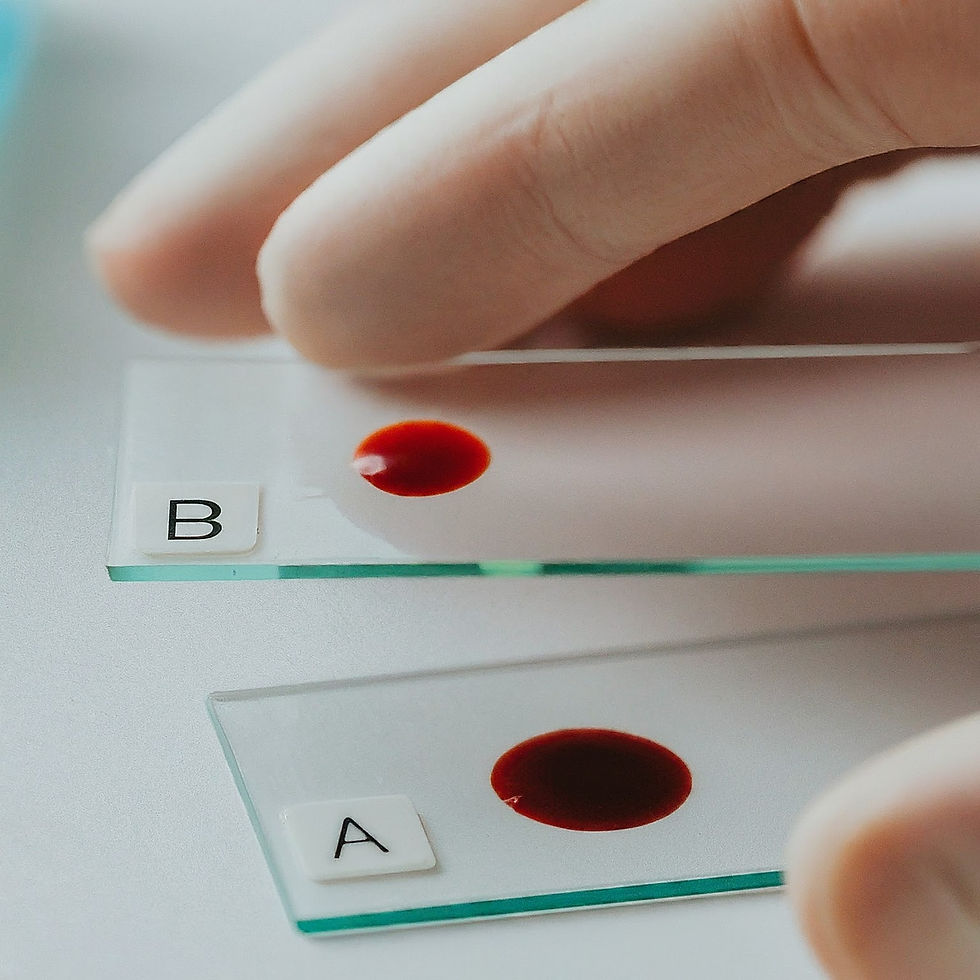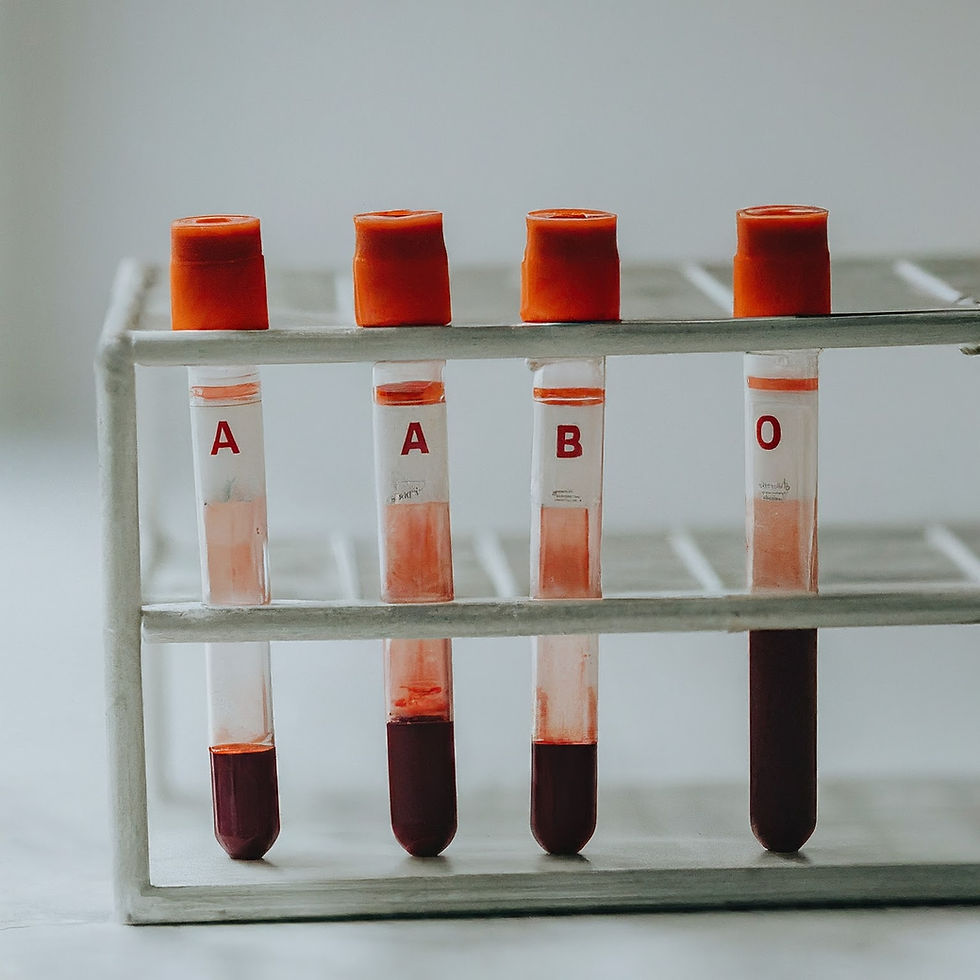Introduction
Blood group testing is a crucial aspect of healthcare that plays a significant role in various medical procedures, from blood transfusions to organ transplants. Knowing one's blood group is essential for ensuring compatibility and preventing adverse reactions during medical interventions. In this blog post, we will explore the basics of blood group testing, the different blood groups, and the methods used for determining an individual's blood type.
The Basics of Blood Groups:
Click here to read about the basics of blood groups.
Blood is categorized into different groups based on the presence or absence of certain antigens and antibodies. The two primary systems used for blood typing are the ABO system and the Rh system. The ABO system classifies blood into four main groups: A, B, AB, and O, while the Rh system designates blood as either Rh-positive or Rh-negative.
Antigens are substances found on the red blood cells in our body.
Does my blood group change?
No, Usually blood group does not change. You will have the same blood group for your entire life.

The blood group might change if you receive a bone marrow transplant. Your blood group changes to the group of the bone marrow donor as bone marrow produces blood.
Often there is a chance that there is an error in doing a blood grouping test.
Understanding the ABO System:
The ABO blood group is determined by the presence or absence of two antigens – A and B – on the surface of red blood cells. The possible combinations are:
Blood Type A: Has A antigens on the surface of red blood cells.

Blood Type B: Has B antigens on the surface of red blood cells.

Blood Type AB: Has both A and B antigens on the surface of red blood cells.

Blood Type O: Has neither A nor B antigens on the surface of red blood cells.

The Rh System:
In addition to the ABO system, blood is classified as Rh-positive or Rh-negative based on the presence or absence of the Rh factor (also known as the Rhesus factor). If the Rh factor is present, the blood type is Rh-positive; if it is absent, the blood type is Rh-negative.
Methods of Blood Group Testing:
Commercial reagents for testing blood groups
Many companies now synthetically produce antibodies that react with A, and B antigens on the red cell surface.
There are separate reagents for each antigen. E.g.: Antisera to detect A antigen on red cells, Antisera to detect B antigens on red cells, etc.
Other blood group systems
ABO and RH Positive/ Negative system is the most important. But there are other minor blood group systems which is also present on red blood cells such as Kell, Kidd, Duffy etc. These blood groups becomes important in special situations.
Blood Typing by Agglutination: This traditional method involves mixing a small sample of blood (red cells) with antibodies specific to the A and B antigens. If the blood reacts by clumping (agglutination) with the antibodies, the presence of the corresponding antigens is confirmed.
When A antigen on red cells and A antisera reagent combine, it shows clumping.
When B antigen on red cells and B antisera reagent combine, it shows clumping.
Since the O blood group does not have A or B antigens on red cells, it will not show clumping.
ABO and Rh Typing via Blood Bank Technology: Automated methods in blood banks utilize advanced technology to streamline the blood typing process. This includes methods like gel column agglutination and solid-phase red cell adherence, which are efficient and accurate.
We can do blood grouping in different methods.
Slide method: The most basic and simplest method. A drop of blood is taken on a glass slide and an antibody reagent is added. It is simple and fast but there are chances for errors.

Tube method: Considered as more reliable. Instead of a glass slide, blood and reagent are mixed in a glass test tube which is easy to read.

Card method: Companies are providing plastic cards that have prefilled reagents. Cards make it more easy to read and have fewer errors.
Genetic testing: All blood groups are decided by the factor of whether that person has the gene for that blood group. Even though costlier and not commonly used, you can test for the genes to identify the blood group.

Other uses of Blood group
Finding criminals: Police and court takes blood groups as evidence to identify suspects as it is very difficult to fake blood groups.
paternity: Children inherit their blood groups from their parents.
Conclusion:
Understanding one's blood type is fundamental for various medical scenarios, and the testing methods have evolved over the years to become more precise and efficient. Whether for blood transfusions, organ transplants, or pregnancy-related complications, accurate blood group testing plays a critical role in ensuring the safety and well-being of individuals receiving medical interventions. As technology continues to advance, the field of blood group testing will likely see further improvements, contributing to better healthcare outcomes.


Comentarios